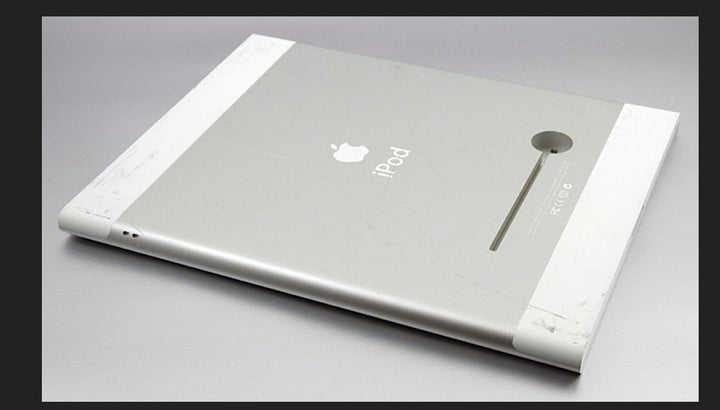
Today's college students are living in a truly digital world, often connected via multiple devices at once. While previous generations spent hours combing through large encyclopedias and reference books in campus libraries, students today have access to an unlimited amount of information at their fingertips, available with the simple touch of a few buttons on a smartphone or tablet. Students have not only begun to use their devices to enhance their studies but many are completely reliant on them. In a survey conducted by CourseSmart and Wakefield Research last year, 38 percent of students said that they could not go more than 10 minutes without checking their mobile device and 98 percent of students reported owning a digital device.
Many colleges and universities are trying to capitalize on students' technological prowess, introducing a variety of device integrations and technology adoptions on their campus. Technology allows for a level of interaction and customization not previously possible and can substantially lower costs for students. Unfortunately, not all students are treated equally in the digital era.
Students with print-related disabilities are often ignored and stuck using archaic learning resources strictly because many in the higher education ecosystem have blatantly neglected this student population. With the American Foundation for the Blind reporting that there are 25 million Americans with vision loss in its 2011 Report, it is a population that has strength in numbers and could play a significant role in our country's ability to compete in the global marketplace. Late last year, the Department of Education's Advisory Commission on Accessible Instructional Materials in Postsecondary Education for Students with Disabilities published a report following a 14-month study, which concluded that the needs of many visually impaired students are not being met. The responsibility for providing assistive technologies and supplemental material, the report found, often becomes the professor's responsibility and many students end up falling through the cracks. The National Federation of the Blind responded to the study by urging congress to take action and implement the recommendations set forth in the report.
These recommendations come at a time when a record number of institutions are implementing innovative technology on campus. Many colleges and universities are piloting tablet computers and adopting digital textbooks in an effort to improve student learning outcomes and lower costs. Buena Vista University in Storm Lake, Iowa, for instance, expanded its initial iPad pilot program to the entire campus last fall and each student now receives an iPad 2 as well as a laptop computer when they begin at the university. Last fall, a group of Canadian colleges announced they would be replacing print textbooks with digital course materials via the iPad at all 38 campuses, which span over 22 cities.
While these moves show real progress towards a new standard of education, it is the responsibility of every player in the higher education landscape -- from technology providers to administrators to faculty -- to ensure that all students, including those with visual impairments, can reap the benefits of today's technology and receive the best education available. A charge not being met as proven by the controversy many institutions have found themselves in the wake of digital efforts. Advocates for students with print-related disabilities have spoken out about the limited accessibility, often resulting in legal action with substantial financial repercussions. Florida State University recently resolved a lawsuit by two blind students, which argued that some courses at the university incorporated technology that was not accessible. The $150,000 settlement will be split between the two students and the university has also promised to continue its efforts to make courses accessible to all students. Penn State University resolved a similar dispute that lasted more than a year, centered on inaccessible technology being used on campus. Although no fault was admitted, the institution agreed to develop a strategy to ensure that technologies used on campus are completely accessible for blind students. New York University and Northwestern also confronted an official complaint last year when the two schools switched over to an email service that was not fully compatible with screen-reading technology.
Potential legal repercussions, however, should not deter institutions from forging ahead with the implementation of innovative technologies, which can significantly decrease costs for students. Colleges and universities must simply adopt fully accessible technologies. Some universities are taking it a step further. The University System of Georgia, for example, is making great strides with its initiative Alternative Media Access Center (AMAC). Operating under the Georgia Tech Enterprise Innovation Institute, AMAC works to improve national services for students with print-related disabilities. The adoption of fully accessible eTextbooks and digital course materials is an easy first step that can greatly benefit all students at a college or university. The tools and additional resources that accompany them allow students to study more efficiently and some materials are now being embedded directly into the students' workflow through their campus portal or learning management system, providing further efficiencies and ease of use.
Looking forward, this is an incredibly exciting time for higher education as we are in the midst of a digital transformation of education. The launch of Apple's New iPad is proof that technology will continue to flourish in higher education. While the education industry has taken steps to improve accessibility in recent years, there is still a long way to go to level the playing field for all students. Education technology providers need to be accountable and ensure their offerings are accessible to students with print-related disabilities. Faculty and administrative officials have a responsibility to select only accessible products for the classroom. Together, we can ensure that no student is left behind as a result of his or her print-related disability as we continue our path in the digital revolution of higher education.